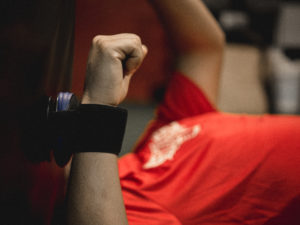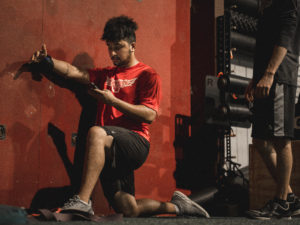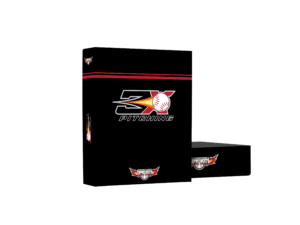![]()
Do you need help to take care of a pitcher's elbow? This is the article to get you started!
Pitching is a strenuous physical exercise that puts a lot of strain on a pitcher's elbow and arm. This may eventually result in an injury or even chronic discomfort, like pitcher's elbow. Building strength in the muscles that endure the most abuse while pitching is essential for both avoiding and treating injuries, even though better mechanics and a reduction in throwing can help to reduce some of this stress. Focusing on strengthening the forearm, shoulder, and back muscles can help pitchers perform better and lower their risk of injury. These muscles are especially crucial for pitchers. The best methods to care for a pitcher's elbow arm will be covered in this article, with a focus on strengthening the muscles that are most frequently used when pitching.
Here are some key points from this article on how to take care of a pitcher's elbow:
- Pitcher's elbow and other injuries can be avoided by strengthening the upper body muscles.
- Exercises for the rotator cuff and scapular muscles are essential for healthy shoulder function and injury avoidance.
- Strengthening the back muscles, especially the lats and traps, can enhance pitching ability generally and lower injury risk.
- These muscles can be strengthened by performing exercises like wrist curls, external rotation exercises, lat pulls, pull-ups, rows, and shrugs.
- To prevent injury, it's crucial to pay attention to correct form and technique when conducting exercises and to gradually increase intensity.
- Programs like the 3X Velocity Camp provide thorough instruction to aid pitchers in developing muscle and endurance while also enhancing mechanics and lowering arm stress.
The importance of forearm muscle strength for pitchers
 A pitcher's total performance and arm strength depend heavily on their forearm muscles if they want to take care of a pitcher's elbow. These muscles, which include pronators, flexors, and extenders, are in charge of the forearm's twisting and bending movements during throwing. While the flexors aid in maintaining control of the wrist and fingers during the pitch, the pronator muscles are mainly responsible for turning the palm downward to spin the ball.
A pitcher's total performance and arm strength depend heavily on their forearm muscles if they want to take care of a pitcher's elbow. These muscles, which include pronators, flexors, and extenders, are in charge of the forearm's twisting and bending movements during throwing. While the flexors aid in maintaining control of the wrist and fingers during the pitch, the pronator muscles are mainly responsible for turning the palm downward to spin the ball.
Building strength in these muscles is important for avoiding injuries like flexor and UCL strains and other problems. Wrist curls are among the finest exercises for forearm muscular development. These require holding a light weight in your hand with the palm facing up and curling your wrist upward. They can be done with resistance bands or light weights. The pronator muscles can also be targeted with reverse wrist curls, and rice buckets, which entail holding the weight or hand with the palm facing down and turning the thumb upward.
The weight and intensity of these exercises should be progressively increased to prevent muscle strain or other injuries. Developing forearm muscle strength is crucial for any pitcher who wants to increase efficiency and avoid injury. Pitchers can keep their forearms strong and healthy and perform at their best on the mound by adding specific exercises and stretches into their training regimen. The 3X Pitching Velocity Program comes with many levels of forearm training routines.
Shoulder muscle exercises to prevent pitcher's elbow
 Another important region for pitchers is the shoulder, and strengthening the rotator cuff and scapular muscles is essential for avoiding elbow injuries as strong shoulders create better stability for the elbow. A collection of muscles and tendons known as the rotator cuff works to regulate and stabilize movement at the shoulder joint. On the other hand, the scapular muscles assist in stabilizing and controlling the movement of the shoulder blade, which is crucial for correct shoulder function when pitching.
Another important region for pitchers is the shoulder, and strengthening the rotator cuff and scapular muscles is essential for avoiding elbow injuries as strong shoulders create better stability for the elbow. A collection of muscles and tendons known as the rotator cuff works to regulate and stabilize movement at the shoulder joint. On the other hand, the scapular muscles assist in stabilizing and controlling the movement of the shoulder blade, which is crucial for correct shoulder function when pitching.
It is crucial to remember that rotator cuff muscle development without healthy scapular function can actually result in injury. This is due to the complex structure of the shoulder joint, which depends on the coordinated action of numerous muscles to function correctly. For instance, the rotator cuff may need to work harder to support the shoulder joint if the scapular muscles are weak, which could result in strain or other injuries. You can learn more about this with the 3X Pitching Programs.
Pitchers can include movements like push-up plus, overhead pressing, and overhead holds in their training regimen to strengthen their rotator cuff and scapular muscles. These exercises aid in strengthening the scapula, which is necessary for correct shoulder function when pitching. Exercises like external rotation using weights or resistance bands can help to strengthen the rotator cuff. The 3X Pitching Velocity Program has many levels of shoulder routines to develop this function and strength.
Strengthening back muscles for better pitching performance
 A pitcher's general performance and the health of their arms are significantly influenced by their back muscles, especially their lats and traps. The latissimus dorsi, also known as the lats, are two muscles that are situated on either side of the back and are used for many different motions, including arm adduction and extension. These muscles play a key role in the arm's acceleration and deceleration during the pitching motion, making them especially crucial for pitchers.
A pitcher's general performance and the health of their arms are significantly influenced by their back muscles, especially their lats and traps. The latissimus dorsi, also known as the lats, are two muscles that are situated on either side of the back and are used for many different motions, including arm adduction and extension. These muscles play a key role in the arm's acceleration and deceleration during the pitching motion, making them especially crucial for pitchers.
Pitchers can include exercises like lat pulls and pull-ups in their training regimen to maintain healthy, powerful lats. The lats benefit from these exercises by becoming stronger and more resilient, which can help to reduce the risk of injury and enhance efficiency on the mound. To prevent injury, it's crucial to concentrate on using correct form and technique when performing these exercises.
Another crucial back muscle group that is involved in shoulder mobility and stability is the traps, or trapezius muscles. These muscles support the shoulder joint stability while pitching and aid in regulating the shoulder blade's mobility.
Exercises like rows and shrugs, in addition to lat pulls and pull-ups, can serve to strengthen the traps and increase overall back strength. To guarantee a well-rounded and efficient training program, it's crucial to incorporate a variety of exercises that focus on various back muscle groups. The 3X Pitching Velocity Program incorporates all these lifts and exercises in the proper programming format for pitchers.
In general, increasing back muscle strength is essential for enhancing pitching efficiency and avoiding injury. Pitchers can keep their backs healthy and strong, enabling them to perform at their best on the field, by including exercises that target the lats and traps in their training regimen.
3X Velocity Camp to Learn How to Take Care of a Pitcher's Elbow
 The 3X Velocity Camp is the ideal chance for pitchers who want to improve their game while also maintaining the health of their arms. The goal of this extensive training regimen is to assist pitchers in gaining strength and stamina in the muscles that are most frequently used when throwing, such as the forearm, shoulder, and back muscles.
The 3X Velocity Camp is the ideal chance for pitchers who want to improve their game while also maintaining the health of their arms. The goal of this extensive training regimen is to assist pitchers in gaining strength and stamina in the muscles that are most frequently used when throwing, such as the forearm, shoulder, and back muscles.
You will learn at the 3X Velocity Camp how to integrate stretches and workouts that focus on these muscles into your routine, which will help you avoid injuries and enhance your overall performance on the mound. In order to ensure that you are completing each exercise properly and safely, you will also receive professional guidance on proper form and technique.
The 3X Velocity Camp concentrates on enhancing pitching mechanics and lowering arm stress in addition to developing muscle and endurance. You can greatly lower your risk of injury and improve your performance on the mound by adding these techniques into your training regimen.
Take advantage of this chance to improve your throwing; don't let it pass you by. Sign up for the 3X Velocity Camp right away to start gaining the strength and stamina you'll need to operate at your peak level while maintaining the health and safety of your arm.




